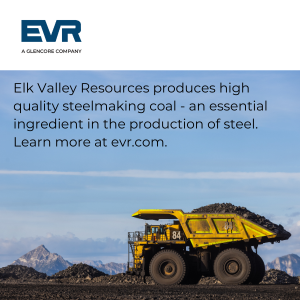
Fernie’s next major challenge is managing municipal wastewater. For decades, the city has discharged treated sewage into the Elk River, a practice increasingly questioned by residents, environmental advocates, and regulators. Concerns about outdated infrastructure, ongoing compliance with provincial standards, and the health of the Elk River mean the community must decide on a new path forward. At the August 19 special council meeting, Mayor Nic Milligan underscored the point directly: Fernie’s next major challenge is wastewater management.
This is not just an engineering issue — it is a decision about what kind of community Fernie wants to be. Should the city double down on traditional engineered treatment systems, or embrace a more natural solution that better reflects its mountain environment?
Fernie’s current wastewater treatment plant is an engineered system, using mechanical and chemical processes to treat sewage before discharge. These systems are reliable, measurable, and designed to meet strict provincial regulations. They offer predictability and clear accountability on effluent quality.
But reliability comes at a cost. Upgrading or expanding the plant could run into tens of millions of dollars, a significant financial strain for a small community. While engineers often prefer this route because of its control and consistency, taxpayers may view it as a heavy, long-term burden—especially if future regulatory changes require further capital outlays.
An increasingly viable option is a constructed wetland at the existing treatment site, where the City already has available land. Constructed wetlands harness plants, soils, and microorganisms to filter pollutants, remove nutrients, and improve water quality. Beyond treatment, wetlands can deliver additional benefits: wildlife habitat, recreational and educational space, and a lower energy footprint.

The Theory:
Biological treatment: Wetland plants like cattails, reeds, and bulrushes slow the flow of water, allowing sediments to settle and microbes to break down organic matter.
Nutrient removal: Microorganisms in the root zone convert harmful nitrogen into harmless nitrogen gas through natural denitrification.
Polishing stage: Wetlands can act as a “final filter” after primary treatment, reducing pathogens and trace contaminants.
Co-benefits: By design, wetlands can also sequester carbon, buffer against floods, and provide habitat for birds, amphibians, and pollinators.
Examples in Practice:
Invermere, BC – The Columbia Valley installed constructed wetlands to improve wastewater polishing and reduce nutrient loading into the Columbia River wetlands. Today, the site also serves as an education resource and birdwatching destination (Columbia Wetlands Stewardship Partners
Okotoks, Alberta – The town integrated naturalized wetlands into its wastewater and stormwater systems, combining treatment with public pathways and park space
Yellowknife, NWT – For decades, Yellowknife has relied on a vast natural wetland lagoon system to treat its municipal wastewater before discharging clean water into Great Slave Lake
Key considerations remain: year-round performance in Fernie’s climate, resilience to spring rains or melted snow, and extreme weather, and how a wetland could be phased or integrated with existing infrastructure. Rigorous design, monitoring, and adaptive management would be essential to ensure consistent compliance.
Fernie is not alone in facing this challenge. The City of Kimberley is advancing a major infrastructure initiative to upgrade its aging Pollution Control Centre (PCC) into a modern, resilient, and environmentally responsible Wastewater Treatment Plant (WWTP) with a budget of $90.6 million. Kimberley’s path highlights both the financial weight that can accompany conventional modernization and the importance of acting before systems reach a crisis point. For Fernie, it’s a timely reminder to compare life-cycle costs, funding opportunities, and risk across all options—not just upfront price tags.
Fernie’s decision is not about choosing a perfect solution; it’s about balancing trade-offs. Engineered systems offer control and familiarity, but at high and potentially escalating cost. Constructed wetlands offer sustainability, affordability, and ecological co-benefits, but depend on careful design, available land (which Fernie has), and long-term stewardship. A hybrid approach—using targeted engineered processes alongside a wetland “polishing” stage—could deliver regulatory certainty while lowering operating costs and creating community amenities.

Protecting the Elk River—a lifeline for residents, recreation, and wildlife—must be at the center of this decision. With land available for a wetland system at the current site, Fernie holds an advantage many municipalities do not. The choice ahead will signal more than how the city treats wastewater; it will reflect community priorities: fiscal responsibility, environmental stewardship, and transparency.
Wastewater may be a technical subject, but the outcome will shape Fernie’s environment, finances, and quality of life for decades.

























